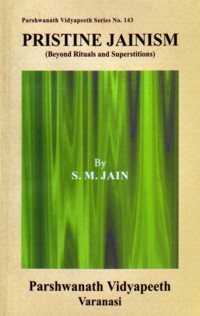This vow enjoins that all types of material possessions by an individual should be reduced to bare minimum. The material possessions include land, gold, silver, jewels, food grains, clothes, buildings, livestock, servants and other necessary items. Jain monks both Digamber and Swetambar continue to demonstrate the principle of least worldly possessions and non-consumerism. This vow is the most effective antidote against growing consumerism. These days the very definition of economic growth, quality of life and standard of living is more and more consumerism. Such an index of growth and development based on unbridled and indiscriminate consumption will eventually be an end of life itself. With uncontrolled population growth rise in per capita consumption, more and more industries to meet the demands, the material resources both renewable and non-renewable are being exhausted at such a rapid pace that nothing will be left in near future. Forests the most vibrant renewable resource are being exploited many times more than their rejuvenating capacity and are dwindling fast. Most minerals, coal, iron, copper, zinc, aluminium and others, stones etc. are being mined in more and more quantities that these may not last for more than 100-200 years, Crude oil, the source of petroleum products on which majority of industries and transport is based will also not last long. Most of these essential non-renewable materials will be things of museums in near future. Once this very foundation and building blocks of industrial development is exhausted, the whole edifice of the civilization will crumble down. There is much talk about sustainable development but sustainability and consumerism are two opposite poles and cannot co-exist. Unless the modern index of development proportionate directly to scale of consumerism is changed the talk of sustainability will remain a mere slogan.
Soil which produces food for the growing millions is also being over exploited and is being depleted and denuded irreparably. In forest based model there is no depletion and denudation of soil as there is no over exploitation of nutrients which are continuously replenished at the same rate they are absorbed. Protective cover of trees also protects soil from wind or water erosion. Till few decades back even in agriculture which was organic, cautious, poly-cropping and not so intensive, soil was allowed its rejuvenation as the practice was to keep it fallow for a year or at least a crop alternately. Organic manure provided all the required nutrients, and did not harm the soil microorganisms, which are essential for maintaining the natural fertility of soil. In the modern high-tech agriculture intensive use of chemical fertilisers has killed most of the beneficial microorganisms. Intensive irrigation has also damaged soil. The indiscriminate use of poisonous pesticides have played havoc on useful insects and birds and residual pesticides in grains, fruits, vegetables etc. are entering the human system also as slow poison, causing a number of diseases including fatal cancer. The residual pesticides found in mothers' milk are many (10 to 20) times more than safe limits. Recent studies indicate that pesticide damage has gone to chromosome level and this should be a matter of serious concern because damage to chromosomes may vitiate genetic code with alarming consequences.
Exhaustive use of water much more than replenishing rate in high-tech agriculture and mushrooming industries have greatly depleted the underground water sources. The water tables are receding, going down fast in most areas and in many areas it is dangerously low to 500-600 metres. During drought these sources almost run dry and there is an acute shortage of even drinking water, necessitating its transport from far off places by trains and truck-tankers. Not only that the shortage of water is increasing, it is getting more and more polluted by agricultural chemical fertilisers, pesticides, industrial effluents and human wastes. Most of important even the big rivers the Ganges, the Jamuna etc. are so polluted at many places that the water is not fit even for bathing and not at all for drinking. Huge amount of money is being spent on purifying the polluted water to make it potable.
Likewise air pollution has already reached intolerant limits and is increasing alarmingly from industrial and vehicular exhausts. In many cities people have to use masks while moving in cities and in highly populated cities have to inhale oxygen at regular intervals. Another insurmountable problem is the disposal of waste being generated day in and day out by consumerist society. Many industrial and mining wastes are piling up and space for dumping is getting scarce. The fly-ash from thermal power plants is enormous and inspite of its new found use for bricks etc, there are few takers and it is piling up. There is no safe disposal technique for waste from atomic power plants evolved so far, yet more and more such power plants are coming up to meet the unending demand for electricity. Because of consumerist life style even the house hold garbage generated in cities and towns is so enormous that its disposal is getting more and more difficult. The hazards of consumerism are far too much than can be tackled by known technologies. The increasing pollution of air, water and soil which are basic resources for life, have already reached to intolerant limits and if not checked will be suicidal. Rational thinkers have postulated that technological consumerist societies have an inbuilt mechanism for self-destruction. The only solution is vow of non-possession i.e. limiting the wants to minimum and checking wasteful consumerism. It is however paradoxical that the Arhat tirthankaras though regarded apostle of non-possession are attributed with having ostentatious displays at the sites of their stay and same display of gold and silver is in temples of their idols which are even decorated with ornaments in Swetambar Sect.
Pristine Jainism : Vow of Non-possession, Non-acquisition (Aparigrah)
Author:
 S.M. Jain
S.M. Jain
 S.M. Jain
S.M. Jain
Published: 15.06.2012
Sources
| Title: | Pristine Jainism (Beyond rituals and superstitions) |
| Publisher: | Parshwanath Vidyapeeth, Varanasi, India |
| by: | Prof. Sagarmal Jain |
| Edition: | 2003 |

Page glossary
Some texts contain footnotes and glossary entries. To distinguish between them, the links have different colors.
Page statistics
This page has been viewed 1010 times.